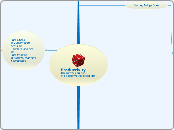
ProductivityThe better you get, the better you'd better get.undefined
GettingThingsDone
Notes
capture all the things that need to get done into a logical and trusted system outside of your head and off your mind
disciplining yourself to make decisions about all the inputs you let into your life, so that you will always have a plan for next actions that you can implement or renegotiate at any moment
Outcomes & Actions
describe in a single sentence the intended successful outcome for the problem or situation
write down the very next [physical] action required to move the situation forward
Horizontal & Vertical Control (Get Things Off Your Mind and Get Them Done)undefined
horizontal maintains coherence across all activities in which you are involved
vertical manages thinking up and down the track of individual topics and projects
Workflow (Horizontal)undefined
collect things that command our attention (anything personal or professional, big or little, that you think should be different than it currently is and that you have any level of internal commitment to changing) undefined
get it all out of your head
minimize your collection buckets
physical in-basket
writing paper and pads
electronic note taking
auditory capture (answering machines, voicemail, dictating equipment)
empty the buckets regularly
process what they mean and what to do about them
what is it?
is it actionable?
No
trash
incubate
someday/maybe list
tickler file
3d calendar
43 folders:
31 Daily Files
12 Monthly Files
Tomorrow's Date at the front
reference (reference should be information that can be easily referred to when needed) undefined
Yes
action takes less than 2 minutes?do it !
context
time available
energy available
priority
action takes more than 2 minutes?
delegate it
defer it
action requiring more than one step to accomplish the desired outcome? Project undefined
organize the results
trash
incubation tools
list of projects
storage or files for project plans and materials
calendar
time specific actions [appointments]
day specific actions
day specific information
a list of reminders of things you're waiting for (only review as often as they have to be in order to stop wondering about them)
list of reminders of next actions
review the options
do
Models for Making Action Choices (The Three-fold Nature of Work)undefined
predefined
work as it shows up
defining work
Six Level Model for Reviewing Your Own Work
current actions
current projects
areas of responsibility
1-2 year goals
3-5 year vision
big picture view
Five Steps to Accomplish Any Task (Project Planning)orFive Phases of Natural Planning Techniques
Why are we doing this?
purpose
[define] success
resources [alignment]
decision making criteria
guiding principles
boundaries
excellence of behavior
What would wild success look, sound, or feel like?
mission
vision
goals
sucessful outcome
How would we accomplish it?brainstorming
view the project from beyond the completion date
envision wild success (suspend "Yeah, but. . .")
capture features, aspects, and qualities you imagine in place
organizing
identify components, subcomponents, details
what must occur and in what order, when?
identify and/or priorities
identify sequences, events
Where do we start?
identifying next actions
How To...
..deal with un-met agreements
lower standards
do it
renegotiate agreement
..file
consider A-Z organizing unless you need more specific filing undefined
reduces number of place something isn't
purge files once a month|year
encourage a dumpster day at work
Summary
keep everything out of your head
decide actions and outcomes when things first emerge on yourradar, instead of later
regularly review and update the complete inventory of open loops of your life and work
Weekly Review
Empty Your Head
Loose Papers
Process Your Notes
Process Calendar
Previous Calendar Datareview for remaining action items, reference information, etc. undefined
Upcoming Calendar
Review "Projects" (and Larger Outcome) Lists
Review "Next Actions" Lists
Review "Waiting For" List
Review Any Relevant Checklists
Review "Someday/Maybe" List
Review "Pending" and Support Files
